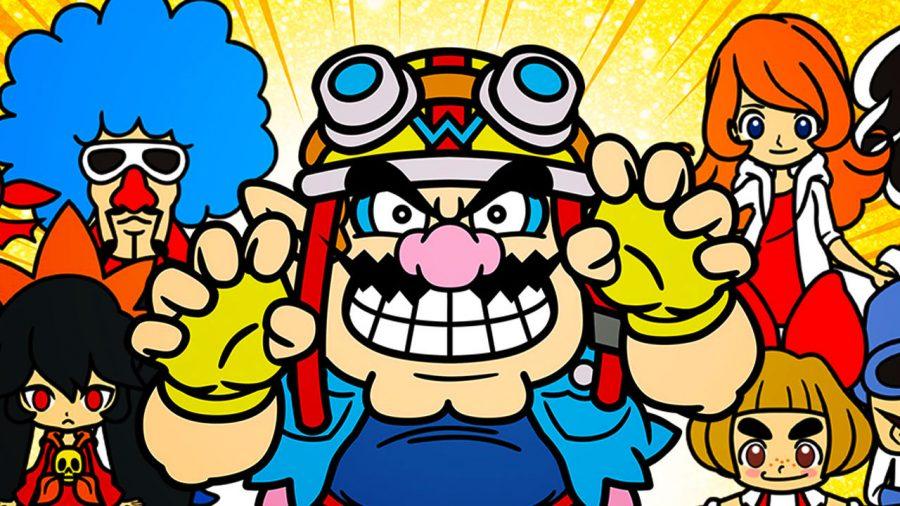WarioWare Gold Review
August 4, 2018
Rapid-action minigames mixed with toilet humor. Does this combination make “WarioWare Gold” a game worth writing home about?
Developed by Intelligent Systems and published by Nintendo, releasing on the 3DS is “WarioWare Gold:” a game that consists of several “microgames” that grow increasingly intense. Each challenge takes only seconds to complete or fail, and most of them having something about them to laugh at- like one making you use a finger to pick a nose. I played a bit of “WarioWare Smooth Moves” as a kid, so I was excited to play a game with past titles that had garnered favorable reception.
Needless to say, the game is very enjoyable, but it isn’t perfect. The first mode available to play is the story mode: a fun and intense affair, with some slight hiccups. The story is guided along through a cast of really fun characters – complete with great voice acting- who are all unique and fun. I haven’t played many Nintendo games that feature Wario as a central character, but he is definitely the best part of the story.
There are several microgames that you must beat in succession, and, if you fail, you must restart from the first game, or use coins you earn from beating other microgames. Once all the microgames in each session are complete, you have to face a final boss microgame. The microgames also have different themes to accompany them. Sports, Nintendo, Fantasy, and That’s Life (a random assortment). Nintendo is probably my favorite, with microgames featuring snippets of games like “Donkey Kong Country” and “The Legend of Zelda: Ocarina of Time”. The central character of Wario is depicted in different ways throughout the game. One part of the game depicts him as a cute little sprite form. I won’t spoil the others because they are all pretty fun to see. Microgames will also have different control schemes-the first limits you to only the use the “d” pad and the “a” button, another only lets you use the stylus, and others make you blow into the microphone of the 3DS to complete the microgame. These are all fun, especially when you aren’t sure what control scheme the next microgame will have (which sometimes will happen).
The microgames aren’t perfect however. A few were incredibly frustrating to figure out and felt more tedious than anything. The other problem with Gold is the length- at first. It only took me a couple hours to beat. The retail price for this game is $39.99, so I really had to do a double take when I beat it. But, after you beat the game, you are given the opportunity to unlock more microgames, several challenge modes and the arcade tab in the menu.
These challenge modes spice up gameplay and keep you on your toes, and instead of having an end boss as usual, the goal of each session is to get a new high score. There are several, but my personal favorite is Sneaky Gamer. It’s anchored by one of the characters from the main story, a child named 9-Volt that likes videogames. The challenge is to do the microgames while avoiding being caught awake by your mother, as you are supposed to be asleep. It sounds strange, but it is totally fun. The biggest incentive to do these modes and replay through microgames is some fun unlockables that you can access through the arcade tab. If you fail a challenge, you get a random set of unlockables, which, thankfully, are not through some activision type gambling- it’s totally free.
Many of these unlockables are boring filler, but some are legitimately fun. There are 14 minigames, each one unique. One is a strange Metroid clone, called Mewtroid, that replaces all audio with cat sounds while keeping the Metroid style. My personal favorite is Pyoro, which you play as a bird shooting at things. The problem is, it will take a lot of luck to unlock all of them, thanks to the previously mentioned random unlockables mechanic. Another category in Arcade that is enjoyable is“studio”, which lets you voice a character(s) from cutscenes in the story mode by saying their lines or whatever you like befor playing back the new cutscene. There is also a miscellaneous section, that gives you some odd, but fun, things. My favorite was a Wario alarm clock, which begins with a countdown, during which you must be asleep. It will then wake you up with an alarm that won’t stop until you’ve beaten all of the minigames in the session. Other than that, there really isn’t as much quality content within the collectibles as I wish there was. They are plagued by several useless things that add no replayability aside from people who want to collect everything.
All in all, “WarioWare Gold” is a very fun game. The story mode is short but sweet, and anchored by a fun and memorable cast. A challenge mode and some collectibles bring you back for more, however, some collectibles are just complete filler. Because of some lack of interesting content, I really think the game would be worth it at a $20-$30 price range instead of its current one at $40. Nevertheless, “WarioWare Gold” is an extremely fun game that is fast-paced, fun and has a childish but still funny sense of humor that sets it apart from other Nintendo games.



